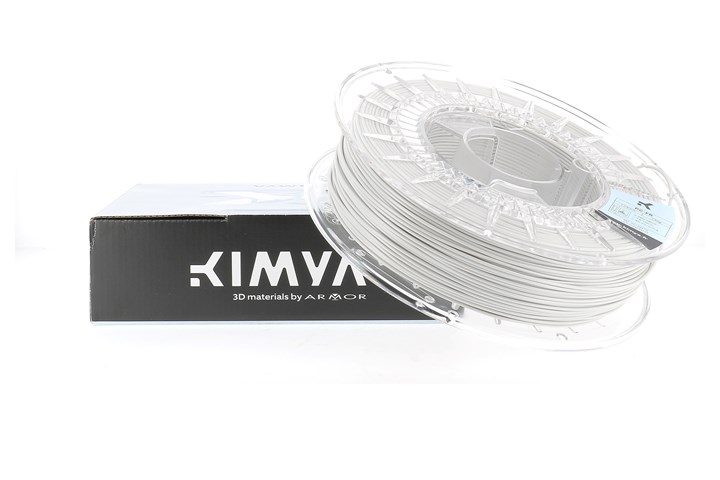Kimya features Kimya PC-FR 3D filament for the transportation sector
Flame-retardant polycarbonate filament reaches EN45545 certification and meets REACH and RoHS standards for production of parts in railway, automotive, electronics.
An expert in the formulation and characterization of materials dedicated to additive manufacturing (AM), Kimya (Nantes, France) continues to enrich its range of high-performance 3D filaments with Kimya PC-FR. The ready-to-use, smokeless, amorphous polycarbonate thermoplastic can withstand a temperature range of -80°C to 105°C and has good dimensional stability. It also stands out for its flame-retardant properties. While it does not incorporate fiber reinforcement, Kimya notes that the filament does have potential to be used in composites. This material joins the 25 or so filaments that the company — with the help of its resellers — distributes in some 20 countries, including 10 technical and eight high-performance filaments.
Certified to EN45545-2 level HL1/HL2/HL3/R1 and R6, and meeting REACH and RoHS standards, Kimya PC-FR filament is particularly suitable for the production of parts in the railway and automotive sectors, as well as in the electronic field, demanding applications that are concerned with fire safety.
“Due to its specific technical characteristics, Kimya PC-FR is an ideal material for printing mechanisms and railway parts that are subject to high heat, such as runners to increase the wheel-rail adhesion of a train in case of emergency braking,” Nicolas Morand, R&D, innovation and industrialization manager at Kimya, says.
In addition, 3D printing with Kimya PC-FR filament is reported to be a more cost- and time-efficient alternative to long lead times — for example, lead times high-cost molding operations are cut in half, making low-volume production applications like obsolete injection part replacement viable.
A 3D-printed guide using Kimya PC-FR, for example, helps protect and secure rail car electrical cables. In this application, the part is used to improved the resistance of cables to vibrations as well as to avoid damage through abrasion.
In an endeavor to make the printing process easier for all users, Kimya has established numerous partnerships with 3D printer manufacturers, to approve the filaments on their machines to service industrial and professional office services. Kimya PC-FR filament has been approved on the Ultra model from manufacturer miniFactory (Seinäjoki, Finland), a Kimya partner since 2018. This filaments was also validated by Stratasys (Rehovot, Israel) this year, enabling its users to benefit from an extended filament range, gain flexibility and accelerate the adoption of AM to their production process.
Related Content
-
Infinite Composites: Type V tanks for space, hydrogen, automotive and more
After a decade of proving its linerless, weight-saving composite tanks with NASA and more than 30 aerospace companies, this CryoSphere pioneer is scaling for growth in commercial space and sustainable transportation on Earth.
-
Paris Air Show 2023 highlights
The Paris Air Show, one of the largest aerospace trade shows in the world, returned for the first time since 2019 and proved that the global aviation industry industry is very much alive and kicking.
-
Composites opportunities in eVTOLs
As eVTOL OEMs seek to advance program certification, production scale-up and lightweighting, AAM’s penetration into the composites market is moving on an upward trajectory.












.jpg;maxWidth=300;quality=90)



